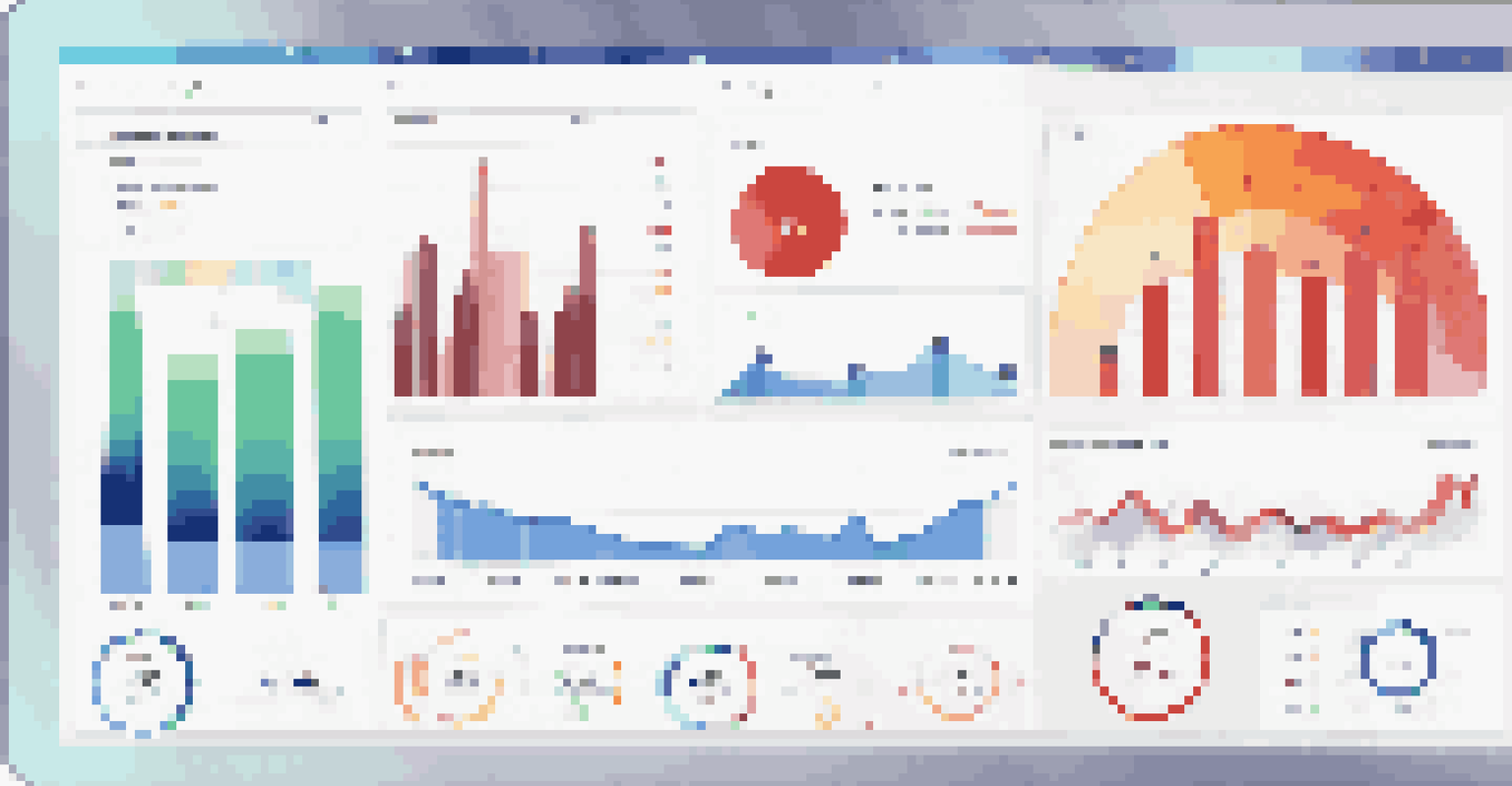Using Social Media Analytics to Drive Event Marketing Success

Understanding Social Media Analytics in Event Marketing
Social media analytics is the process of collecting and analyzing data from social media platforms to understand audience behavior and engagement. For event marketers, this means leveraging insights from likes, shares, comments, and more to craft tailored experiences. By comprehending these metrics, you can make informed decisions that resonate with your target audience.
Without data, you're just another person with an opinion.
These analytics not only help in gauging audience interest but also in identifying the right platforms for promotion. For instance, if your target demographic is most active on Instagram, focusing your marketing efforts there can yield better results. Essentially, it’s about meeting your audience where they already are, making your event marketing efforts more effective.
Moreover, understanding social media trends and patterns allows marketers to adapt and innovate their strategies. By keeping a pulse on what’s trending, you can create content that engages and excites your audience, ensuring that your event stands out in a crowded digital space.
Setting Clear Objectives for Your Event Marketing
Before diving into social media analytics, it’s crucial to establish clear objectives for your event marketing. Are you aiming to increase attendance, boost brand awareness, or enhance engagement? Setting these goals will guide your analytics efforts and help you measure success effectively.

For example, if your goal is to increase attendance, you might track metrics such as registration clicks and shares of your event page. Alternatively, if you’re focused on brand awareness, you could monitor reach and impressions to gauge how many people are seeing your content. Each objective will direct your analytics focus, making your efforts more targeted.
Leverage Social Media Analytics
Utilizing social media analytics helps event marketers understand audience behavior, tailor experiences, and choose the right platforms for promotion.
Having well-defined goals also allows you to refine your strategies based on performance. If certain tactics aren’t delivering results, you can pivot and try new approaches, ultimately driving better outcomes for your event.
Choosing the Right Metrics to Track
With your objectives set, the next step is to choose the right metrics to track. Common metrics include engagement rates, click-through rates, and conversion rates. Each of these provides valuable insights into how well your audience is responding to your marketing efforts.
The goal is to turn data into information, and information into insight.
For instance, a high engagement rate may indicate that your content is resonating with your audience, while a low click-through rate might suggest that your call-to-action needs tweaking. By analyzing these metrics, you can better understand what works and what doesn’t, allowing you to continuously improve your strategies.
Additionally, consider using tools like Google Analytics or social media insights to gather comprehensive data. These tools can help visualize trends over time, making it easier to identify patterns and make data-driven decisions.
Leveraging Audience Insights for Targeted Campaigns
Social media platforms offer a wealth of audience insights that can be invaluable for event marketing. Demographics, interests, and online behavior data can help you tailor your campaigns to specific segments of your audience. This targeted approach increases the likelihood of engagement and attendance.
For example, if you discover that a significant portion of your audience is interested in sustainability, you might highlight eco-friendly aspects of your event in your marketing materials. This not only attracts attention but also creates a connection with your audience based on shared values.
Set Clear Marketing Objectives
Establishing specific goals for your event marketing guides your analytics focus and helps measure success effectively.
Understanding your audience deeply allows for personalized marketing, which can significantly enhance engagement. When people feel that your content speaks directly to them, they’re more likely to take action, whether it’s sharing your event or purchasing a ticket.
Timing Your Campaigns for Maximum Impact
Timing is critical in event marketing, and social media analytics can help you find the perfect moment to launch your campaigns. By analyzing past events, you can identify when your audience is most active and receptive to your messages. This insight ensures that your marketing efforts hit their mark.
For example, if your data shows that engagement peaks on Thursday evenings, you might schedule your promotional posts for that time. Similarly, analyzing when your audience typically registers for events can help you time your reminders and calls-to-action effectively.
Ultimately, strategic timing can elevate your event marketing, increasing visibility and driving engagement. When your audience sees your content at the right time, it’s more likely to resonate and lead to desired actions.
Adapting Strategies Based on Real-Time Data
One of the most significant advantages of social media analytics is the ability to adapt strategies based on real-time data. As your campaign unfolds, monitoring analytics allows you to see what’s working and what isn’t. This flexibility can lead to immediate improvements and better outcomes.
For instance, if you notice that a particular post is gaining traction, consider boosting it or creating similar content to capitalize on that interest. Conversely, if engagement is low on certain posts, it’s a sign that you may need to alter your messaging or visuals to better resonate with your audience.
Adapt Strategies with Real-Time Data
Monitoring real-time data enables marketers to adjust their strategies immediately, optimizing engagement and overall event success.
By remaining agile and responsive to real-time data, you can optimize your marketing efforts continuously. This proactive approach not only enhances your event marketing strategies but also shows your audience that you’re listening and adapting to their needs.
Measuring Success and Gathering Feedback Post-Event
After your event concludes, measuring success is vital to understand the effectiveness of your marketing efforts. Utilizing social media analytics, you can evaluate engagement, attendance, and overall reach. These metrics provide a clear picture of how well your strategies worked and where improvements can be made for future events.
Gathering feedback from attendees is equally important. Surveys and social media polls can help you understand what participants enjoyed and what could be improved. This feedback, combined with your analytics data, provides a comprehensive overview of your event’s success.

Ultimately, this process of measurement and feedback is not just about evaluating past performance; it’s about informing future strategies. By learning from each event, you can continuously refine your approach, ensuring that each subsequent event is even more successful.